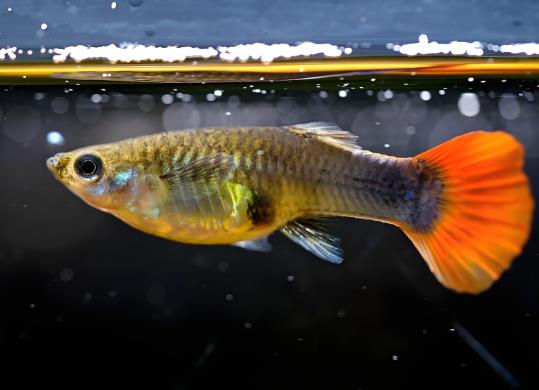Guppies, as tropical fish, have strict requirements for water temperature. Here are detailed recommendations considering their various growth stages and seasons:

I. Optimal Temperature Ranges
Adult fish: The most suitable range is 22-26°C, with around 24°C being ideal. Temperatures below 20°C will lead to reduced appetite, and prolonged exposure to temperatures below 15°C may result in death.
Juvenile fish/fry: Slightly higher temperatures (24-27°C) are needed, as they can promote metabolism and growth. However, temperatures exceeding 27°C may easily cause deformities or diseases.
Breeding period: It is recommended to keep the temperature between 24-28°C. Excessively high temperatures (such as above 30°C) can cause female fish to have difficulty in giving birth or lead to deformities in fry.
II. Temperature Limits and Risks
Minimum tolerance: They can survive in temperatures above 13°C for a short period, but temperatures below 10°C are fatal. A heater is required in winter to maintain the temperature above 20°C.
Maximum risks: Temperatures exceeding 30°C will cause a decrease in vitality and insufficient dissolved oxygen. Prolonged exposure to temperatures above 32°C can easily trigger diseases.
III. Key Considerations
Temperature difference control: The daily temperature fluctuation should not exceed 3°C, and the temperature difference between new and old water should be close when changing water.
Seasonal management:
In summer, avoid direct sunlight on the fish tank to prevent sudden temperature rises.
In winter, it is advisable to maintain a constant temperature with a heater, especially when the room temperature is below 15°C.
Water quality coordination: A pH value of 6.5-7.5 and moderate hardness, combined with a stable water temperature, can jointly ensure the health of guppies.
IV. Common Misconceptions
High-temperature misunderstanding: Although temperatures above 28°C can accelerate growth, they can cause calcium loss and deformities.
Low-temperature adaptation: Although guppies can survive in temperatures below 18°C for a short time, long-term exposure will affect their reproductive capacity and body color performance.
